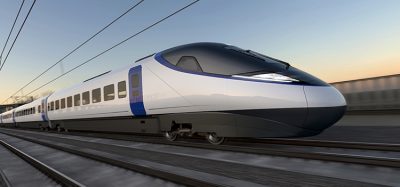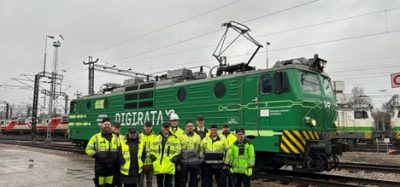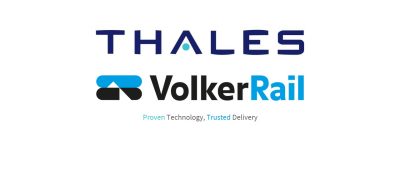FRMCS as a key enabler for ERTMS and rail digitalisation
Posted: 1 May 2020 | Carlo de Grandis | No comments yet
Carlo de Grandis, Policy Officer of Rail Digitalisation at the European Commission, explains how the Future Railway Mobile Communication System (FRMCS) is hoped to be the successor of GSM-R, but also as a key enabler for rail transport digitalisation.


Why FRMCS?
In its first formulation provided by the rail sector, the Future Railway Mobile Communication System (FRMCS), developed under the aegis of the UIC, encompassed a variety of user cases classified under the following three broad categories:
- Signalling and safety-critical applications
- Business/other operation-related applications (partly with safety implications)
- Connectivity/customer services.
The critical FRMCS applications, together with their technological options, are mainly related to communication functions (voice and data) strictly linked to railway operations with safety implications (usually overlapping with the so-called mission‑critical functions/systems). These are widely dealt with by the Implementing Regulation for Command, Control and Signalling subsystem (CCS TSI – EC implementing regulation 919/2016, under revision).
This set of functions, including both voice and data applications (both mission critical for mainline rail) underpins the allocation of specific network capacity to railways; in Europe, this corresponds to the current GSM-R bands.
Alongside the CCS-associated functions, non-critical communication systems play, in parallel, an increasingly important role for rail digitalisation, conveying, potentially, the larger amount of data concerning tracking and tracing of goods and conveying big data coming from real-time on-board monitoring of sensors – for example, maintenance status of locomotives, vibrations on-board/track-side induced, shocks/integrity of containers/ITUs, temperature recording.
This data, however, does not require (in terms of reliability and latency) the performances ensured by a dedicated/owned radio network.
Introducing a new radio system for critical communication on railways responds to an urgent need, driven by the obsolescence of the underlying technology, and the need to optimise the radio spectrum use – an increasingly scarce resource linked to digitalisation.
GSM obsolescence impacts the GSM-R network and its equipment, and affects their perspective for maintenance, becoming, more and more, a market niche with ad hoc components.
Furthermore, beyond any hardware and software consideration, the European Commission with the relevant bodies (CEPT), is planning the gradual phasing out of GSM from the radio spectrum – studies are on-going to assess the possibility to shut-off all 2G services on the 900 MHz spectrum currently allocated to GSM-R during 2030s.
Accordingly, in 2012, the UIC commenced with the FRMCS project to prepare for the introduction of a successor to GSM-R, fulfilling voice and data communication needs of ERTMS.


Figure 1 – Major milestones to be achieved in the coming years
From GSM-R to FRMCS
GSM-R: A handy tool for railways
Notwithstanding the planned phasing-out, GSM-R is a success story – it has been deployed and covered, in a relatively short timeframe, 50 per cent of the European rail network (with a faster and cheaper uptake than ERTMS) and has proven to be highly reliable and terribly cost-efficient, as far as track‑side deployment is concerned – thanks also to the specific spectrum band made available for it.
GSM-R is still being deployed, and rightly so, since it is simply unwise to have significant network portions not covered by an interoperable radio system. GSM-R is perfectly fit for ERTMS needs in terms of both data and voice communication, even the potential introduction of Automatic Train Operations (ATO) with Grade of Automation 1/2 and of Level 3 are not likely to require a significant increase of data flow. Furthermore, updated ERTMS (Baseline 3 Release 2) provides for the introduction of GPRS, thus paving the way to an IP-based packet switching for data, with a fourfold increase of the spectrum efficiency.
Actually, the current strains in spectrum capacity for GSM-R are mostly linked to the problem of cross-border coordination and large use of voice communication, linked to old operational rules, logics and habits and not relying on in-cabin signalling (the impact of both phenomena being worsened by the circuit-switching logic).
In terms of technical specifications, GSM-R specific ‘System Requirements Specifications and Functional Requirements Specifications’ were defined and have been maintained in the framework of the EIRENE project (European Integrated Radio Enhanced Network), developed by the UIC with the involvement of the ETSI (the European Telecommunications Standards Institute1) Technical Committee on Rail Telecommunications (TC-RT), and in cooperation with the European Union Agency for Railways (ERA).
With regard to the specific technical standardisation for telecoms, the ETSI TC RT maintains and ensures the development of GSM-R standards. In fact, ETSI plays a key role to fit rail specific technologies into the mainstream worldwide mobile communication standards, submitting ‘Change Requests’ to the ‘3rd Generation Partnership Project’ (3GPP), the worldwide collaborative project between standards organisation for the specification of advanced mobile communication technologies.
ETSI oversees the standard EN 301 515 requirements for GSM operations on railways, and TS 102 281 detailed requirements for GSM operations on railways.
The origins of FRMCS
The User Requirement Specifications (URS) of FRMCS defined by the UIC encompasses the functions to be included in the upgrade of ERTMS specification foreseen in the on-going revision process of the CCS TSI.
A revision of Commission Regulation (EU) 2016/919 is planned for 2022 to include FRMCS and other innovative functionalities and to update and enhance the performances of ERTMS and facilitate its deployment. Hence the urgent need to develop a standard based on 3GPP specifications (Release 16, or higher) compatible with the harmonised band made available for GSM-R (900 MHz), as well as other harmonised bands defined on ECC/CEPT conclusions for FRMCS spectrum.
The European railway community would in fact benefit from FRMCS products based on the most performing commercial standards available, in terms of both functions to be performed as critical application for railways and of efficient use of the spectrum.
FRMCS is expected to ensure IP-based voice and data communication (critical application) needed by ERTMS endowed with the functionalities foreseen by the so-called game-changers, notably ATO (Grade of Automation 1-4), Level 3 with virtual/moving blocks, on-board train positioning and train integrity and virtual coupling, as long as it can be reasonably defined in terms of radio communication needs.
On the radio architecture, ETSI has spontaneously drafted a first version of the Technical Report (TR 103 459) as a study on the system architecture for FRMCS. While, for the CCS components, the UIC-organised ‘Telecom On-Board Architecture (TOBA)’ working group is to provide elements on the radio system architecture from a rail perspective, which has notably developed alternative technical scenarios, allowing the coexistence of GSM-R and FRMCS during the migration period across the European Economic Area.
Following a structured dialogue with the stakeholders, consensus has been reached on the opportunity to have the new radio technology ready for the large-scale roll-out by 2025, with an objective to allow planning GSM-R decommissioning, indicatively, in the following decade. A complete set of FRMCS specifications needed for ensuring interoperable rail operations would, therefore, be included in the next revision of the CCS TSI, currently planned for 2022, in order to allow FRMCS deployment in the following years.
This step represents the end of a complex process which still requires major milestones to be achieved in the coming years – notably a standardisation exercise by ETSI, the definition of the overall CCS architecture, the mainstreaming of the exercise in the future CCS TSI (scheduled for 2022), the standardisation of the testing and validation specifications and the production of the components outlined in Figure 1.
ETSI, within the remit of its mandate, will contribute to define, within 3GPP, detailed 5G features in the upcoming releases fit for purpose for FRMCS and rail specific needs.
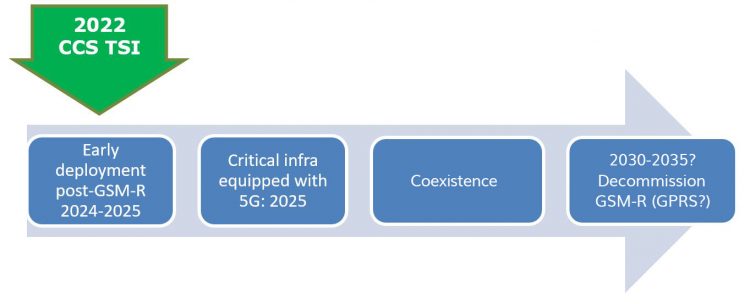

Figure 2 – The timeline for the migration process
FRMCS in the framework of rail digitalisation and ERTMS evolution
The new CCS system – and, in general, digitalised railways – is evolving towards connected and automated mobile assets linked to the infrastructure via radio communication systems – radio communication replacing most of the trackside (and part of the on-board) assets. Therefore, capacity, reliability and availability of the radio spectrum will have to be ensured, with a specific focus on preserving the investments done for GSM-R and facilitating further deployment on the lines not yet equipped.
Overall, rail digitalisation calls for hybrid radio communication solutions, where critical applications will, as a general rule, rely on dedicated/IM-owned networks, complemented with commercial networks and/or satellite communication, while a mix of options will evolve at a faster pace on a market-driven base for the remaining commercial applications.
Other applications, such as the provision of on-board broadband services and connectivity to passengers, shall be based on commercial services by mobile network operators, as a general rule.
In order to progressively phase-in several new features included in the evolution of ERTMS (the so‑called ‘game-changers’), and to facilitate the deployment of an advanced and harmonised signalling system, an overall modular and standardised architecture is called for, encompassing ETCS, the additional functions foreseen by the game‑changers, and its radio system (GSM-R, and then FRMCS, with dual equipment during the migration period). Accordingly, FRMCS should be interfaced with ETCS, enhanced with the aforementioned function, and these interfaces shall be fully defined.
ERA, in cooperation with the EC, has set-up an ad hoc working group (CCS-A) to coordinate the definition of the new modular, comprehensive CCS, within the definition of the future CCS TSI, and regularly reports on the progress of the working party on Coordination Radio Evolution, stressing the need to synchronise the architecture development.
An overarching objective to be considered for FRMCS deployment is that, in line with the European Union commitments for ERTMS deployment, FRMCS specifications should ensure the compatibility of on-board units equipped with ETCS Baseline 3 Release 2.
Accordingly, it will be crucial to accommodate FRMCS within the framework of the CCS System architecture – referring for the on-board side to the TOBA group outcome – the proposed solutions will have to encompass retrofitting existing on‑board units and equipping new rolling stock, notwithstanding the fact that, in both cases, the general configuration needs to foresee dual on‑board system, one of which is still based on circuit-switching, and the other fully IP-based.
Beside the external driver (technological obsolescence plus spectrum management), introducing 5G technology (Release 16 or 17) provides a series of specific opportunities, intrinsically linked to its standard, including:
- Enhanced spectrum efficiency – GPRS already represents a meaningful step versus circuit‑switching logic, multiplying up to four times the spectrum efficiency; further meaningful enhancements are expected with 5G
- Overcoming the dual voice-data system currently in use, which complicates the whole architecture and significantly increases the on-board costs. However, defining an ad hoc on-board ERTMS and radio architecture for retrofitting and for new vehicles will be crucial to seize this opportunity
- New features synergic with the introduction of the ‘game-changers’2 for the Command, Signalling and Control systems of railways (notably, but not exclusively, ATO3), including video communication for degraded conditions
- High cyber-resilience and disposing of a reliable technology for high-speed and very-high-speed (up to 500km/h).
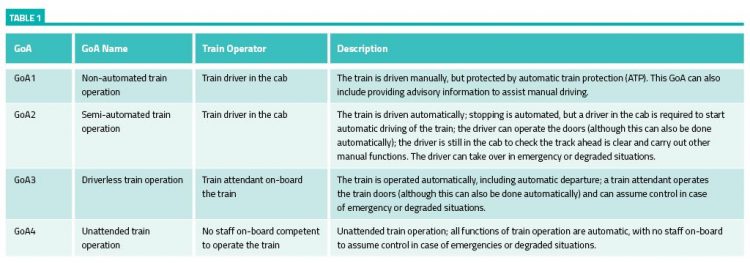

Table 1 – ATOs are classified according to their Grade of Automation (GoA)
The radio spectrum conundrum
The deployment of FRMCS calls for adequate radio spectrum capacity: small amounts of ultra-low latency, fail-proof, critical data – notably positioning, speed, emergency status and automatic braking – are needed for critical applications.
Historically, two specific radio spectrum bands of 4MHz each have been harmonised for ensuring the availability of GSM-R services within the 900MHz band – 876-880MHz uplink and 921‑925MHz downlink.
The Commission Implementing Decision (EU) 2018/1538 of 11 October 2018 has redefined the Radio Spectrum Decision allocation, stating in Article 4 that Member States shall monitor the use of the 874-876MHz and 915-921MHz frequency bands, including the potential use of the 874,4‑876MHz and 919,4-921MHz sub-bands for FRMCS.
The Radio Spectrum Decision aims to prevent spectrum fragmentation, ensuring, on the contrary, the progressive harmonisation of two blocks of 5.6MHz for GSM-R and FRMCS, at 874,4-880MHz and 919,4-925MHz.
As stated in the ETSI Technical Report 103 554, simulations are currently being updated to consider the use of the 1900MHz band, as well as the new 5G radio technology, according to the hypothesis for future spectrum allocation to meet the migration need, currently assessed within the competent bodies of the Electronic Communications Committee in charge of Radio Spectrum for Railway Applications.
Among the most relevant activities called for to come to an agreed and harmonised spectrum allocation are, therefore:
- Coordination within CEPT on radio frequencies, based on the current 2X5.6MHz around 900 MHz (GSM-R and E-GSMR bands), additional 10MHz in the 1900MHz band and, possibly, additional solutions provided by network slicing with other applications
- EU coordination plan during the transition period between GSM-R and FRMCS, also through the update of the ERTMS National Implementation Plans.
Notwithstanding the generalised orientation toward dedicated networks, different models can apply to the former (critical services, linked to signalling).
Finland
In Finland, a single spectrum band and technology is devoted to the provision of safety and security‑critical services, at an ad-hoc low‑frequency spectrum band, with TETRA4 as a technological option (with a migration process toward LTE). The different sectorial networks can be built in a synergic way under such an approach. A generalisation of this approach has, so far, been deemed difficult, due to the potential conflicts in setting the right balance of priorities for the allocation of spectrum capacity between critical services, including security-related ones. In front of these difficulties, the potential of network slicing in 5G will have to be tested in the future in order to build-up trust and potentially generalise this approach, which would, undoubtedly, provide both efficiency in the spectrum allocation and provide, overall, a fully satisfactory capacity.
Other Member States
Other Member States are preliminarily assessing the possibility to reach agreements with mobile network operators on the Service Level Agreements for the provision of the same services via commercial networks. Similar agreements have failed to materialise in the past due to the demanding contractual conditions requested in term of quality of service, and to the small size of the market niche – hence the difficulty to come to an interesting business case.
The next steps: Migration from GSM-R
With regard to GSM-R obsolescence – maintaining the niche segment of GSM-R, based on a technology currently being replaced, while ensuring high performance level on the rail network, will imply increasing costs for both the suppliers and the rail operator (infrastructure managers and railway undertaking).
It is, therefore, expected that the migration period, with the coexistence of two technologies, will impose additional strain on the sector, which is likely to worsen on the medium- to long-run. The spectrum choice and the possibility to have both technologies available in the same bands will substantially define these additional costs, both in terms of CAPEX and OPEX, throughout the lifecycle of GSM-R and FRMCS.
The re-use of the current GSM-R bands is a crucial condition to preserve the majority of the track-side investments undertaken for GSM-R deployment. Therefore, the process of developing and deploying FRMCS, while phasing-out GSM-R, shall be based on the following considerations:
- A dual system will have to be deployed during a transition period between 2025 and 2035
- The standardisation exercise for defining the specificity of FRMCS technology for radio communication shall aim at minimising specificities, keeping most of its building blocks as ‘commercial-off-the-shelves’ (COTS)
- Selective component/subsystem testing will have to be defined too, with a view to limit the total costs of the migration, towards ‘plug‑and‑play’ solutions
- The combined radio technology/frequency choice (starting from the 2 x 5.6MHz GSM-R band and additional bands potentially harmonised) shall aim at protecting the investment whilst allowing for future evolutions
- Complementarily, it will be key to seek an efficient use of the shared spectrum capacity FRMCS and GSM-R looking for ad-hoc technological options (exploring white spaces, network slicing and others).
Accordingly, the indicative timeline for the aforementioned migration process is shown in Figure 2.
References
1. ETSI was founded in 1988 following a decision by The Directors-General of the European Conference of Postal and Telecommunications Administrations (CEPT) triggered by a EC Green Paper (1986).
2. Game-changers consist notably of ETCS Level 3 (including virtual and moving blocks, on-board train integrity and positioning), Automatic Train Operation (ATO), embedded cyber-security linked to the vital role of radio communication, enhanced performances linked to braking curves, and, in the future virtual coupling.
3. Automation is expected to contribute substantially in terms of regularity and reliability of the services, as well as to the energy efficiency of the rail system – ATOs are classified according to their Grade of Automation (GoA) – see Table 1.
4. TETRA: Trans European Trunked Radio Application, specifically designed for use by government agencies, emergency services, for public safety/security networks, transport services and the military – the services are provided at a dedicated 450 MHz band.
Carlo de Grandis is a transport specialist with 20 years of experience, 15 of which in the European Commission (EC), where he has covered several roles. Since 2017, Carlo has been in charge of rail digitalisation, including ERTMS innovation and the new radio system, for which he has a structured cooperation with ERA, ETSI, the UIC, and, within the EC, with DG CNECT (CONNECT). Carlo is an engineer by training, following a master’s degree at the Milan Polytechnic University. Among his working tasks, Carlo has been coordinating the Regional Fund support to Transport, contributed to the TEN-T Revision in 2011-2013 and has been advisor to a European TEN-T Coordinator for eight years.
Issue
Related topics
Digitalisation, European Rail Traffic Management System (ERTMS), European Train Control System (ETCS), Future Railway Mobile Communications System (FRMCS), Global System for Mobile Communications – Railway (GSM-R), Standardisation & Technical Harmonisation
Related organisations
European Commission (EC), International Union of Railways (UIC)





